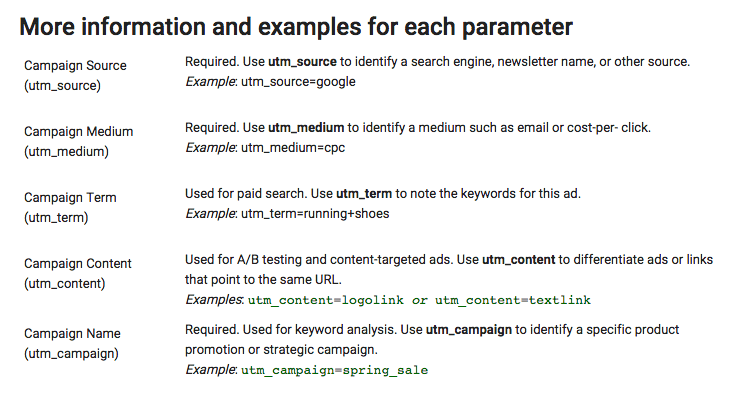Web Analytics: A Digital Healthcare Marketer’s BFF
// By Jane Weber Brubaker //

Jaimie Somlai, Director of Digital Marketing at Wheaton Franciscan Healthcare
Two years ago, Wheaton Franciscan Healthcare launched its new website, mywheaton.org, built on Geonetric’s VitalSite CMS (content management system). One of the top priorities of the redesign was to make it easier for visitors to find physicians, choose physicians, and request appointments. “Before we redesigned our site, I would say we were averaging about 50 appointment requests per month,” says Jaimie Somlai, Director of Digital Marketing. “Now we’re up to nearly 400 a month.”
Somlai attributes the website’s positive results to two factors: The overall upgrade of the website, and in-depth understanding of the pathways that lead people to the site, and once there, lead them to choose a physician or take other desired actions. Google Analytics has been the key to unlocking the secrets of optimization. “Using a free program like Google Analytics gives you everything you need to be able to track your online and offline efforts,” Somlai says. “It’s just so powerful. There’s no reason why any digital marketer shouldn’t be using it or something equivalent to it.”  Wheaton Franciscan Healthcare is a multi-state health system with operations in Wisconsin, Illinois, and Iowa. It is the largest provider of healthcare services in southeast Wisconsin, spanning Milwaukee, Racine, and Waukesha counties, with eight acute care and specialty hospitals. The system has more than 1,300 physicians and 10,000 associates and affiliations.
Wheaton Franciscan Healthcare is a multi-state health system with operations in Wisconsin, Illinois, and Iowa. It is the largest provider of healthcare services in southeast Wisconsin, spanning Milwaukee, Racine, and Waukesha counties, with eight acute care and specialty hospitals. The system has more than 1,300 physicians and 10,000 associates and affiliations.
Somlai sets the strategic direction for Wheaton Franciscan’s digital marketing initiatives in Wisconsin, which are integrated with the overall marketing plan. She is responsible for the website, social media, search engine marketing, online advertising, email marketing, and reputation management. Somlai is half of a two-person digital team. To extend the team, the health system works with Jigsaw, its agency of record, to plan and execute online advertising campaigns, and technology consulting firm Perficient for search engine marketing.
Getting Set for Tracking
“Even just a couple of years ago, we didn’t really have a formal process for reporting on campaign results,” Somlai says. “Having our agency support has allowed us to bring all those pieces together and produce really valuable campaign reports at the campaign level. Digital is a huge component of that because we’re pushing everybody to the website in order to track those results.”
Charlie Collins, Digital Analyst at Jigsaw for Wheaton Franciscan, recommends marketers decide ahead of time what they want to measure. “Before you start sending creative to media vendors or start driving traffic to the website, really figure out what you want to know in terms of on-site performance, engagement, conversion data, and acquisition metrics,” says Collins. “Google Analytics is so powerful and there’s so much you can do with it that you can get really lost if you don’t have a pretty clear idea of what you want to get out of it.”
Long-Range Goals, Short-Term Tracking
Wheaton Franciscan’s larger marketing goals for the current fiscal year, which ends in June, are focused on continuing to build the brand in the market and driving new business to the primary care medical group.
In Wisconsin, the system is broken up into smaller regional markets, each with its own distinct priorities. The south market, for example, rolled out an image campaign this year, and the central market promoted its new urgent care facility.
Somlai reviews overall website performance monthly. “I’m looking at trends over time for particular KPIs [key performance indicators] to see if we’re doing better or worse in a given month,” she says. The KPIs include:
- Visits
- Unique users
- Page views
- Overall conversion rates
- Online appointments
- Classes and events registrations
The Ultimate KPI
Form completions are a type of conversion, but they don’t tell the whole story—did a patient who filled out an online appointment request form, for example, actually come in, meet with a physician, and have a procedure? Wheaton Franciscan compares forms data from the website to billing data in its CRM system to calculate downstream revenue and return on marketing investment (ROMI). This closed-loop reporting gives the system the ability to evaluate which advertising media drive the highest-value traffic.
Opportunities for Course Correction
Somlai reviews advertising campaign performance on an ongoing basis throughout the year. “We work with our ad agency and search partners on a campaign-by-campaign level to look at how our campaigns are performing,” she says. The agency produces mid-flight reports every six to eight weeks during the course of a campaign, and again at the end of the campaign. Each creative element is associated with a unique tracking code. If certain elements are performing better, the campaign can be adjusted accordingly. “We can see through Google Analytics that they’re coming through a print ad, or from radio or television,” says Somlai. The reporting also sheds light on the performance of the landing page. “[F]or example, a promo box may not be performing as well as we thought,” she says.
Flexible Parameters Allow User-Defined Analytics
Google Analytics parameters, pieces of code appended to URLs, enable tracking at a granular level. “There are many parameters, but the most common ones are source, medium, and campaign,” says Collins. “The really cool part about it is, you can define them however you want as long as you are consistent.” Offline media is tracked using “vanity” URLs, such as “mywheaton.org/SFUrgentCare” that redirect to a URL built using Google Analytics parameters. This allows visitors to more easily remember the URL, and marketers to get detailed information on which ads drove the traffic.
Google-Parameters (source: Google URL Builder)
Driving Results, Testing New Channels
The most successful campaign this year was the primary care medical group campaign. “That was an integrated campaign, so we did have a lot of traditional elements in the mix,” says Somlai. The campaign consisted of magazine, print, outdoor, paid search, YouTube pre-roll, Pandora, and radio. YouTube and Pandora were new channels for Wheaton Franciscan and both performed well.
“We’ve had a lot of success from both organic search and paid search in particular,” says Somlai. “We’ve done a lot of work in local search, so each of our employed physicians has a Google+ page that we update monthly.”
Mobile Traffic Is Different
Sometimes the answers aren’t obvious, and the data points to the need for additional insight. Wheaton Franciscan has an active mobile advertising program, which is generating high click-through rates but isn’t translating into conversions. “That’s something we’re trying to take a look at and understand whether that’s a function of our site [the website is responsively designed] or do we need to optimize our landing pages a little differently for the mobile visitor,” Somlai says.
Best Advice: Become Best Friends With Google Analytics
Somlai has seen huge growth in digital over her four years at Wheaton Franciscan. Tracking has helped to make the case for shifting budget from other channels, or reallocating budget within digital channels. Her advice to other marketers is to track as much as you can. “Getting to know Google Analytics, getting immersed in it, understanding what it can do for you, I think that’s really crucial,” Somlai says. “So becoming best friends with Google Analytics, I would say, is my best piece of advice.
Google offers extensive online training. Learn more About Google Analytics Individual Qualification (IQ). To find out how and why Google got into the web analytics game in the first place and why they give it away, listen to this talk by Brett Crosby, the founder of Urchin, the analytics solution that became Google Analytics.
Google Analytics Tip
What Is “Direct” Traffic? It could be that someone typed a domain name into their browser or used a bookmark to directly access your site. But Direct also includes a much broader pool of traffic, far beyond those two instances. Essentially, Direct sessions occur anytime Google Analytics cannot determine another referrer. Other instances can include:
- Clicking a link from an email (depending on email provider/program)
- Clicking a link from a Microsoft Office or PDF document
- Accessing the site from a shortened URL (depending on the URL shortener)
- Clicking a link from mobile social media apps like Facebook or Twitter. Phone apps often do not pass referrer information.
- Going to a non-secure (http) site from a link on a secure (https) site, as the secure site won’t pass a referrer to the non-secure site. For instance, if someone clicks a link on https://example.com to go to http://example2.com, the analytics for example2.com will show the session as Direct.
- Accessing a site from organic search, in some instances, will end up being reported as Direct due to browser issues. An experiment conducted by Groupon showed as much as 60 percent of direct traffic may be from organic search.
One way to address proper allocation of Direct traffic is to add tracking parameters or to tag URLs used in specific campaigns.
Source: Metalytics.com
Jane Weber Brubaker is the Editor of eHealthcare Strategy & Trends.


